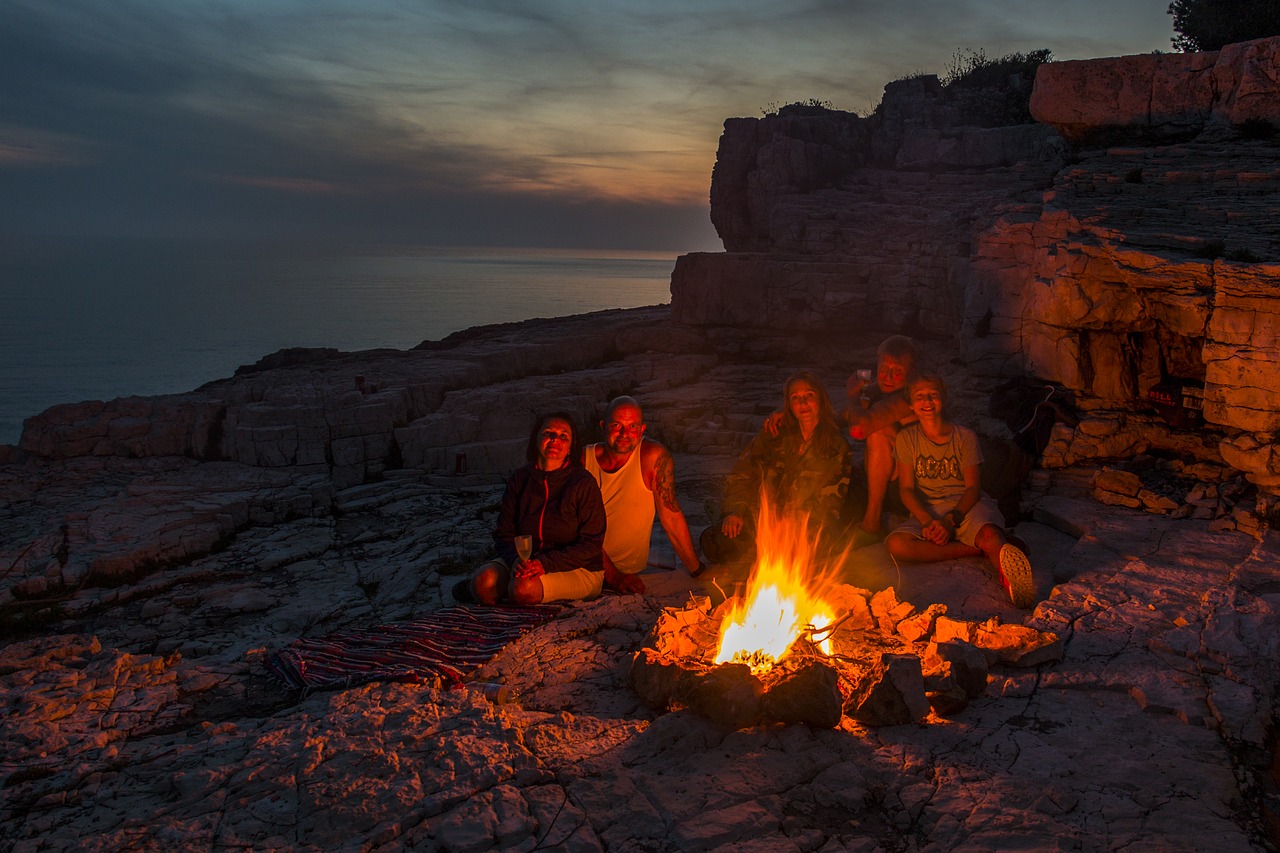6 Tips To Safe Campfire

Fred Bear said “Hardships are quickly forgotten. Intense heat, bitter cold, rain and snow, fatigue, and luckless hunting fade quickly into memories of great fellowship, thoughts of beautiful country, pleasant camps, and happy campfires.”
Campfires have been our companionship and comforter for thousands of years, it’s part of us and who doesn’t like the sound of the soft crackle of burning wood, the aroma of roasting food, the warmth and coziness we receive just by being close.
One of the key features of a good camping trip is the campfire; it gives us food, heat, protection and comfort.
But with a campfire it’s not all take take on our part, we have to give as well, or there can be dire consequences. If we don’t know how to look after our fire, or we ignore it for too long a time, we run the risk of it getting out of control and starting a wildfire, causing damage to ourselves and the environment around us.

It’s important that if we’re going to have fires, we acknowledge that we are responsible for them and we know what we’re doing with them. So, here are five fire safety guidelines for having a perfect camping adventure without stress or worry.
1. Placement

Before starting the fire, you have to find a safe and secure spot for it. It is important that you avoid low branches and siting the fire too near bushes, especially in the summer when things are dry, it is surprisingly easy for them to catch fire, even from a small spark.
Also, when setting the fire, you should avoid having any gear close by, tents, chairs, backpacks etc should all be situated away from the fire, 8 to 10-foot is a good baseline to start with.
Make sure the ground is cleared as well and that there are no roots close to the surface that can catch light and smolder, smoldering roots can create fires in areas away from where you have your fire so be careful.
2. Proper build

It is crucial to know how to structure your fire and how to safely add more wood to it. For a basic fire start with knowing what tinder you are going to use, then this will light the kindling, many people use a teepee formation which is fine to start with.
When the kindling is burning well you can add slightly larger diameter wood as fuel and continue as you need to, right up to larger wood. It’s always best to burn dry wood, it burns hotter and with a lot less smoke.
You should not need to add flammable liquids to the fire, they can spread the fire quickly and unpredictably.
3. Safe pit

Many sites have metal fire pits or established areas that have had fires in before, make sure you use these if they’re available, there’s no point scaring the ground more and the sites already used are probably the safest.
If you do choose your own area for a fire, make sure that you clear it of any flammable materials and that the fire will not do damage. You might need to dig down a little if you want to protect your fire from the wind, or it makes tidying up after yourself easier as you can bury the ashes, alternatively you might want to pile up some soil on the ground and make a small raised platform which will help to keep the ground from being damaged and any roots from smoldering away.
Here are some safety precautions:
- Set a 5-foot perimeter of clear ground around the fire location
- Circle the pit with stones or metal ring if you need to protect the fire from wind or you need to contain the fire.
- Keep flammable items away from the fire area.
4. Be aware

When camping with your family and friends, it is very easy to get distracted, wander off or get involved in other things. In those situations, the wind might blow just a few sparkles from the fire, and that’s enough to ruin your trip, it can put holes in tents and gear, set other locations and bushes on fire.
So, it is very important to always to have a responsible person who will be in charge of watching and taking care of the fire, especially if small kids and pets are around it.
5. Water and dirt

Sometimes a little breeze of wind may cause the fire to spread and grow unpredictably. In those situations, you should always have the means to control or extinguish the fire, a pile/bucket of dirt or water nearby to put on the fire.
You will be surprised how much water it takes to get a fire cold and the ground cold after being so hot.
6. Extinguish before sleeping

After a long hike and a warm and tasty meal cooked over the fire, it’s time to go to sleep. So, unless there is someone from the group watching over the fire, you should never leave the fire burning during sleeping hours.
Before going to bed always extinguish the fire with water, or cover it with dirt, and then you could have a nice and well-deserved sleep.
So, if you want to have a fun weekend getaway, make sure that you follow these fire safety tips for the campfire, and you should have a wonderful time. Don’t forget the marshmallows!

If you have any comments then please drop us a message on our Outdoor Revival Facebook page
If you have a good story to tell or blog let us know about it on our FB page, we’re also happy for article or review submissions, we’d love to hear from you.
We live in a beautiful world, get out there and enjoy it.
Outdoor Revival – Reconnecting us all with the Outdoor
